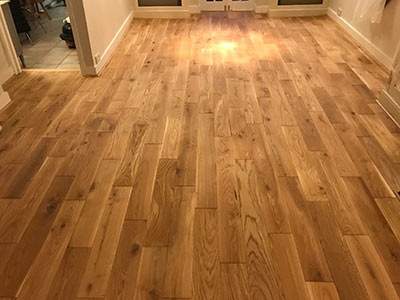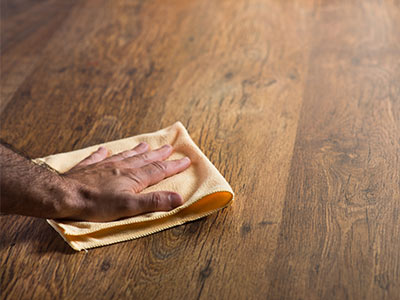Back to Flooring Products
Unveiling the Secrets of Wood Floor Stains Care
 Wood floors can add warmth and character to any home, but over time, they can start to show signs of wear and tear. Stained wood floors are a popular choice for homeowners, but they require regular maintenance to keep them looking their best. Understanding the recoating requirements, cleaning and maintenance best practices, and addressing wear and tear are all essential aspects of wood floor stain maintenance.
Wood floors can add warmth and character to any home, but over time, they can start to show signs of wear and tear. Stained wood floors are a popular choice for homeowners, but they require regular maintenance to keep them looking their best. Understanding the recoating requirements, cleaning and maintenance best practices, and addressing wear and tear are all essential aspects of wood floor stain maintenance.
We will explore the importance of regular cleaning and maintenance for stained wood floors, as well as the process and techniques for recoating to refresh and renovating the floors. From understanding when it's time to recoat to the best practices for prolonging the life of stained wood floors, we will cover everything you need to know to keep your floors looking beautiful for years to come. Whether you're a homeowner looking to maintain your floors or a professional in the wood floor industry, this article will provide valuable insights and tips for wood floor stain maintenance and recoating.
Understanding Recoating Requirements
Wood floors are a popular choice for homes due to their natural beauty and durability. However, over time, the stain on a wood floor can become worn and faded, leading to a need for maintenance. Understanding the recoating requirements for a wood floor is essential to keeping it looking its best. Recoating involves applying a new layer of stain and finish to the wood floor to refresh its appearance and protect it from wear and tear. It is important to regularly inspect the wood floor for signs of wear, such as scratches, discolouration, or loss of sheen, as these indicate the need for recoating.
The frequency of recoating will depend on the amount of foot traffic and wear the floor receives. Typically, a wood floor should be recoated every 3-5 years, but this can vary depending on the specific conditions of the home. In addition to regular recoating, it is important to properly maintain the wood floor by cleaning it regularly with the appropriate products and avoiding excessive moisture or direct sunlight which can cause damage. By understanding the recoating requirements and properly maintaining a wood floor, homeowners can ensure that their floors remain beautiful and long-lasting for years to come.
Cleaning and Maintenance Best Practices
 Wood floors can add a touch of warmth and elegance to any home, but to maintain their beauty and longevity, regular cleaning and maintenance is essential. The best practice for wood floor stain maintenance is to regularly sweep or vacuum to remove dirt and debris that can scratch and dull the surface. Additionally, using a damp mop with a mild cleaner specifically designed for wood floors can help remove any stubborn stains or grime. It’s important to avoid using harsh chemicals or excessive water, as these can damage the wood.
Wood floors can add a touch of warmth and elegance to any home, but to maintain their beauty and longevity, regular cleaning and maintenance is essential. The best practice for wood floor stain maintenance is to regularly sweep or vacuum to remove dirt and debris that can scratch and dull the surface. Additionally, using a damp mop with a mild cleaner specifically designed for wood floors can help remove any stubborn stains or grime. It’s important to avoid using harsh chemicals or excessive water, as these can damage the wood.
When it comes to recoating, it’s best to follow the manufacturer’s recommendations for when a new coat of stain or finish is needed. Before recoating, it’s important to thoroughly clean the floor and lightly sand it to ensure a smooth and even surface. By following these cleaning and maintenance best practices, wood floors can continue to bring warmth and beauty to a home for many years to come.
Stain Recoating Process and Techniques
Maintaining the look of your wood floors can be a rewarding process, particularly when it comes to stain maintenance and recoating. Over time, the finish on wood floors can become dull and worn due to daily wear and tear. To keep your floors looking fresh and vibrant, periodic maintenance and recoating is essential. The recoating process involves removing the existing finish, lightly sanding the surface to ensure proper adhesion of the new finish, and then applying a new coat of stain.
When it comes to recoating, there are various techniques and methods to consider. For example, water-based finishes are easy to apply and dry quickly, while oil-based finishes are more durable and create a richer tone. The choice of finish will ultimately depend on the level of foot traffic and the desired look for the wood floor. Additionally, it is important to consider proper ventilation and safety precautions when applying the finish. With the right maintenance and wood floor staining techniques, your wood floors can maintain their beauty and lustre for years to come. By staying proactive with stain maintenance and recoating, you can extend the lifespan of your wood floors and keep them looking like new.